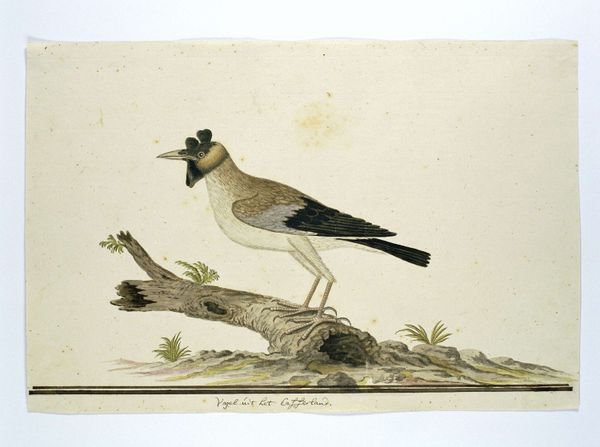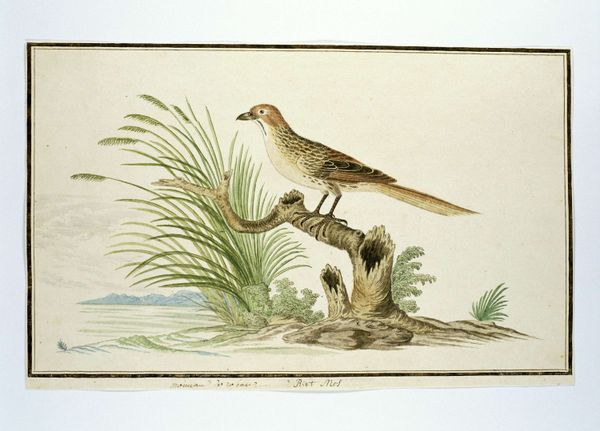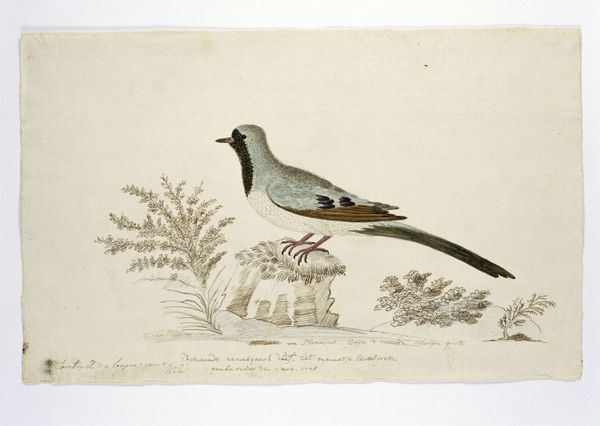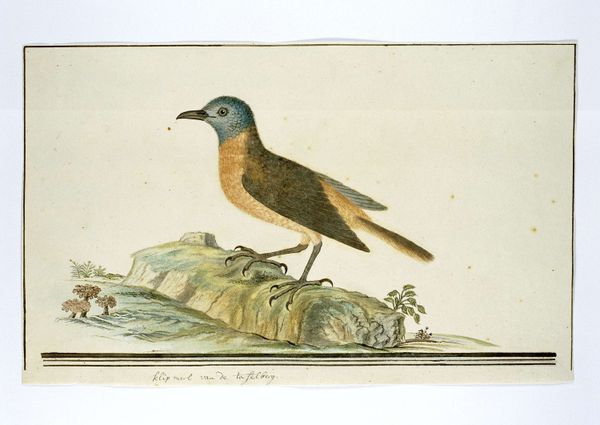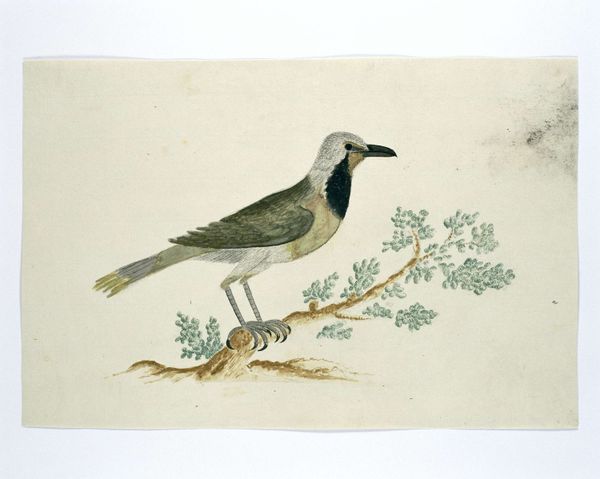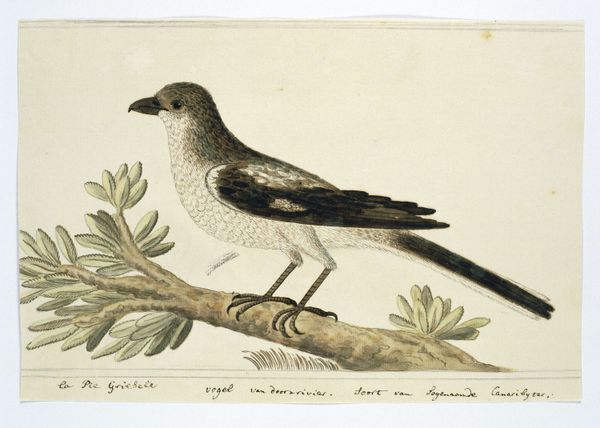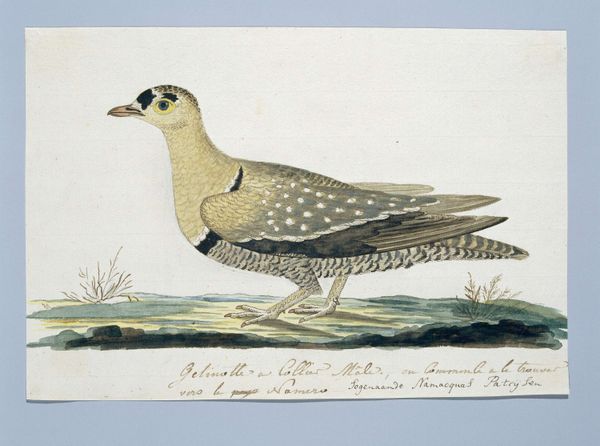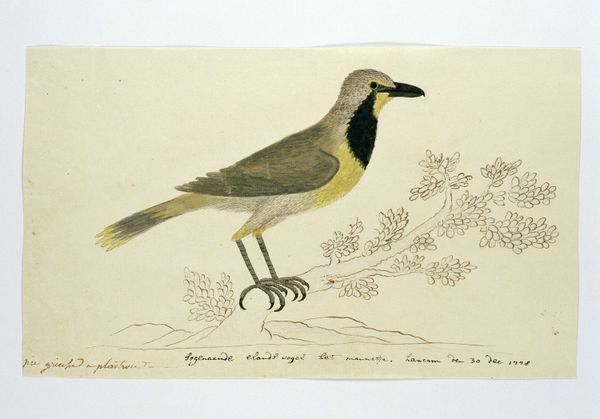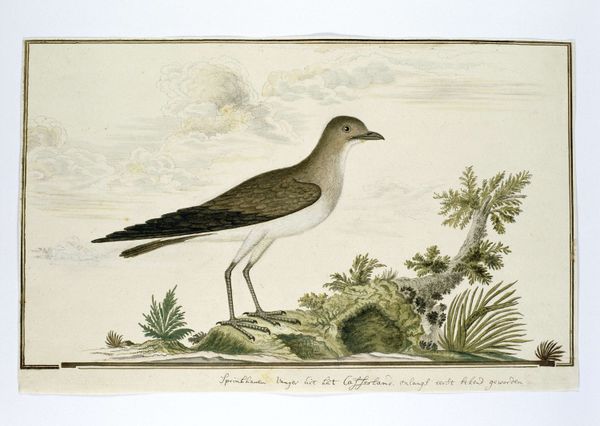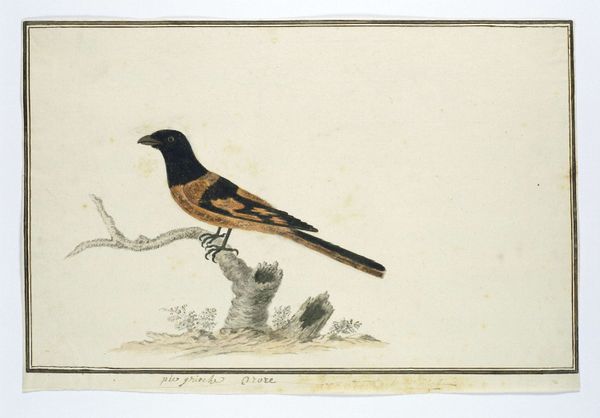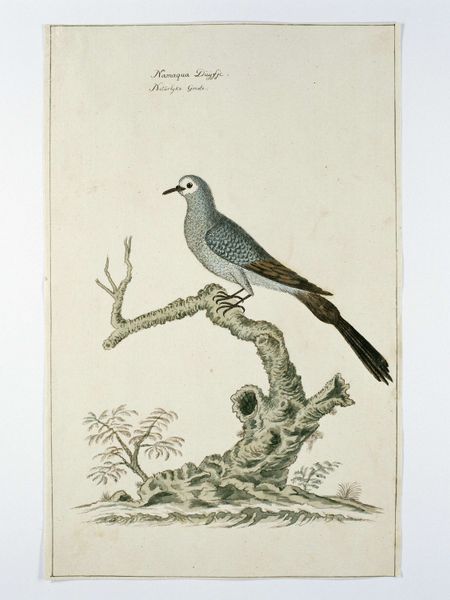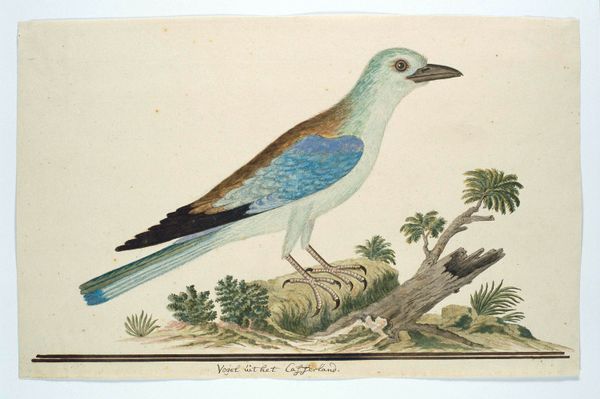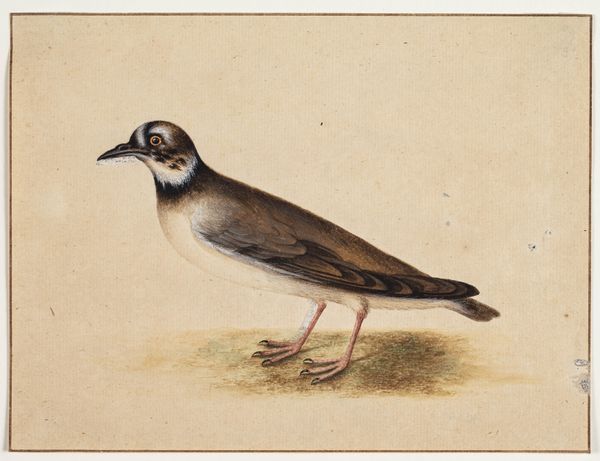
drawing, plein-air, paper, watercolor
#
drawing
#
plein-air
#
landscape
#
figuration
#
paper
#
watercolor
#
watercolour illustration
#
naturalism
#
watercolor
Dimensions: height 660 mm, width 480 mm, height 247 mm, width 399 mm, height 225 mm, width 399 mm
Copyright: Rijks Museum: Open Domain
Editor: Here we have Robert Jacob Gordon's "Lelspreeuw (Creatophora cinerea): een vrouwtje," possibly created between 1777 and 1786, a delicate watercolor drawing of a female wattled starling perched on a branch. There's something quite compelling about its directness; it feels both scientific and aesthetically pleasing. How would you interpret this work, looking beyond its simple depiction of a bird? Curator: This isn't just a drawing of a bird, it's a document embedded within the complex colonial history of the late 18th century. Gordon was a military man and explorer in the service of the Dutch East India Company. This drawing, part of a larger atlas of the Cape, reflects the scientific impulse of the Enlightenment, yet it's also intrinsically linked to resource extraction and colonial power. It's plein-air style, implying on-site observation, further cementing its role as empirical "evidence." What do you think about the accuracy versus artistic license here? Editor: That's interesting, I hadn't considered the colonial implications so directly. Do you think he would have had an audience back in Europe specifically in mind when creating these works? Was it meant to encourage investment in colonial expansion, perhaps? Curator: Undoubtedly. These images helped construct a visual understanding of the Cape for a European audience, influencing perceptions and potentially fueling colonial ambitions. Consider how this image was received: was it hung on a wall, carefully archived as scientific data, or reproduced to disseminate information? Each use carries a different socio-political weight. It's fascinating how a seemingly simple bird drawing can unlock such intricate layers of historical context. Editor: It definitely reframes the image for me. I was initially drawn to the artistry, but understanding the context adds depth. It serves as a potent reminder that even seemingly objective representations are shaped by power dynamics. Thank you, that's been incredibly insightful. Curator: Precisely. Seeing art through its historical context unveils the powerful relationship between representation, knowledge, and colonial influence.
Comments
No comments
Be the first to comment and join the conversation on the ultimate creative platform.
